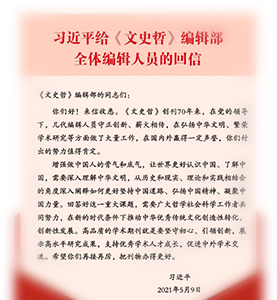中古以来南北差异的整合发展与江南的角色功用 李治安
由于疆域广袤、民族风俗多样,东汉以后,南北整合发展上升为中华文明内部诸地域子文明间相互关系的“主旋律”。首次南北差异整合发生在南北朝隋唐。北朝体制诚为隋唐立国之本或入口,南朝体制则是其演化趋势或出口。由“南朝化”起步的“唐宋变革”,就是革均田、租庸调、府兵等北朝三制度的“命”。元统一后的南北差异博弈整合,北制因素过分强大,总体占上风。朱元璋、朱棣父子个人经历和政治文化心态等偶然因素,致使明前期的整合再次以北制占优势。明中叶以后南、北制因素的另一次整合,改而以南制为重心。重在革除徭役的“一条鞭法”,亦是南制因素压倒北制的“里程碑”。东汉以后的中国,先后发生“五胡乱华”和女真、蒙古等南下入主,黄河中下游的华夏先进的经济和文化曾经被中断两三次。万幸的是,华夏经济和文化藉东晋和南宋南渡在江南得以延续。5世纪以后的江南,逐渐成为中国经济重心和文化主脉所在,成为中国“富民”和农商并重秩序成长发展的“风水宝地”。尤其是宋元明清的江南依然代表着社会经济的发展趋势,依然是统一国家的条件下南北博弈整合中新兴动力的渊薮。在唐宋前后南北地域差异的上述三四次博弈整合中,承载着中国经济重心及文化精英的江南地区,推动着华夏经济和文化在南北统一国度下总体上继续繁荣,最终避免了欧洲5世纪日耳曼蛮族南下中断或暂时毁灭希腊罗马文明而整体步入黑暗中世纪的悲剧性道路。中华文明五千年延续至今,总体上未曾中断,在世界范围独一无二,江南的历史性角色作用功不可没。
The Integration and Development of the South and the North, and the Role and Function of the Regions South of the Yangtze River since Middle Antiquity Li Zhi’an
Because of the vast territory and diverse national customs, after the Eastern Han Dynasty, the integration and development of the south and the north became the “theme” of the relationship among regional civilizations within the Chinese civilization. The first integration of the divergence between the south and the north happened during the period from the Southern and Northern Dynasties to the Sui and Tang Dynasties. The institutions of the Northern Dynasties were the foundation or entrance of the Sui and Tang Dynasties, and the institutions of the Southern Dynasties were their trend or exit. The “Tang-Song Transition” started from the “southernization” just reformed the three main institutions of the Northern Dynasties, i.e. the systems of land equalization, the grain-labor-cloth tax, and the militia garrison. After the unity of the Yuan Dynasty, the factors of the Northern institutions generally prevailed in the game and integration of the divergence between the south and the north. Due to the chances such as personal experiences, and political and cultural psychology of Zhu Yuanzhang and Zhu Di, the Northern institutions dominated once again in the integration during early Ming Dynasty. The Southern institutions changed to be the focus in another integration of the Southern and Northern institutions since the mid-Ming. The single tax in silver focusing on abolishing convee could also be regarded as a milestone that the Southern institutions overwhelming the Northern. The advanced Huaxia economy and culture survived in south of the Yangtze River (jiangnan) by the southward migration of the Eastern Jin and Southern Song, though it was interrupted for two or three times after the Eastern Han Dynasty. Since the 5th century, the jiangnan area had been China’s economic center, cultural artery, and a “heartland” where the people were rich, with agriculture and commerce developing simultaneously. During the Song, Yuan, Ming, and Qing Dynasties, the jiangnan area still represented the trend of social economics, and at the same time, acted as the root of emerging power in the integration of the south and the north under national unification. In the three or four times of such integration around the Tang and Song Dynasties, the Jiangnan area where China’s economic center and cultural elite lied promoted continued prosperity in a united country, and finally avoided the European tragedy of the ancient Greek and Roman civilization being interrupted or ruined temporarily by the German race. The Chinese civilization has been continuing for five thousand years and was uninterrupted in general, which is unique worldwide, and the jiangnan area played an undeniable role in it.


